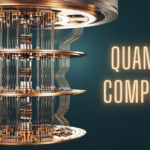
Image Source: pixabay.
We have listed down 7 most influential robots in history. Robots are popular for several reasons. The feature artificial intelligence and are capable of performing many tasks just like humans. The pace at which technology is progressing is remarkable, more so because robots are becoming smarter. Did you know that the history of robots goes back many centuries? If not, then you will find this piece an exciting read. Modern robots show amazing abilities and seem to defy logic by performing acrobats, lifting unbelievably heavy loads, and doing things at remarkable speed. Likewise, robots can now multitask, which was once thought impossible.
Today’s robots can perform tasks that might surprise you, but where did all this tech and know-how to build robots this smart came from? Did robots exist before the twentieth century? Some did, and scientists tried hands making robots that could do simple things and help them do everyday things.
Here is a list of 7 most influential robots in history. You have to pick your own most influential robots from the list:
Shakey
The first fully autonomous robot that could move around and explore the surroundings was named Shakey was developed in 1972. This robot was the brainchild of the Artificial Intelligence Center of Stanford Research Institute. The robot had the ability to breakdown commands into a specific sequence to achieve a defined goal. Operator could locate the block by pushing the ramp to the block and perform the task after reaching it.
Perseverance Mars Rover
NASA has been making Mars Rovers for decades. The previous rover Curiosity did a remarkable job providing information about the red planet that was unprecedented. Building upon that experience, NASA has now sent what it terms as the most advanced Mars Rover to date. The Perseverance Rover has onboard sensors that allow it to take high-resolution photos and transmit them back to the Earth. The sophisticated AI equipped rover also has a Multi-mission radioscopic thermoelectric generator that converts the heat of plutonium into electricity. Landing the rover on Mar’s surface was completely autonomous and made a new record for safely landing the heaviest payload in Mars exploration history.
The Big Dog
In 2005, American company Boston Dynamics developed a four-legged, highly agile robot that could efficiently move across different terrains at high speed. The robot dog used innovative sensors and gyro to maintain stability over hilly and off-road terrain. It has an inbuilt voice analyzer and command system that allowed it to listen to and obey commands. The Big Dog now has a more refined but more miniature robot, the Spot. The robot has characteristics that help it travel through rough terrain and maintain balance when kicked.
Predator
1995 was the year when General Atomics launched the first drone of its kind that could autonomously fly and land. Not only that, the drone could fly to extended ranges and very high altitudes. The drone could carry weapons and guide them using cutting edge sensors day and night in all weather conditions. The drone could fly to 460 miles, destroy the target and stay in the air for up to 15 hours. This autonomous drone saw its first employment during the 1995 Balkan War.
Asimo
Asimo is a Japanese robot. Honda manufactured it in 2000. It features a human-like body that allows it to walk and behave like humans. Honda was looking to design a robot that could mimic human actions and gestures. The idea was to make a robot that could co-exist with humans with ease. Asimo was the first of its kind as it could move and jump like humans, wave hand and give gestures, listen to commands and conversations and recognize people and voices.
The Duck
French inventor de Vaucanson came up with many inventions during his time, but one creation was notable. In 1738, he designed a mechanical duck with approximately 400 parts and could do things that were considered remarkable for that time. This duck could flap her wings, eat food, digest and even defecate it. How De Vaucanson designed components that allowed the duck to digest her food remained a mystery for more than 274 years. Only now do we see robots like EcoBot that can defecate after digesting foods.
The ABE
The ABE is an automatic submersible. It is use for underwater scientific research. Using this robot allowed scientists to explore marine life and inspection of infrastructure. The submersible robot was designed by Woods Hole Oceanographic Institute and can move around autonomously and survey large reasons under the sea for up to 24 hours. The submersible object is also capable of navigating safely by avoiding collisions with the seabed. The autonomous movement of the vessel negates the need to connect tethers.
Wrapping up the Most influential robots
The future looks promising for robots and AI, but going through their history is exciting and intriguing. Which of these is the most influential robot in your opinion?






Comments 2